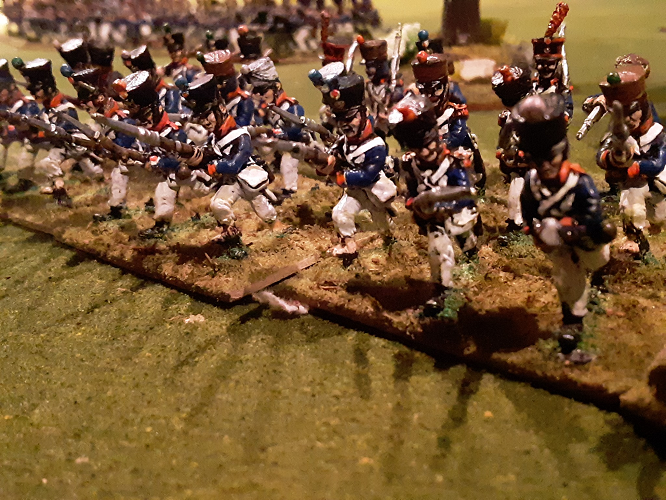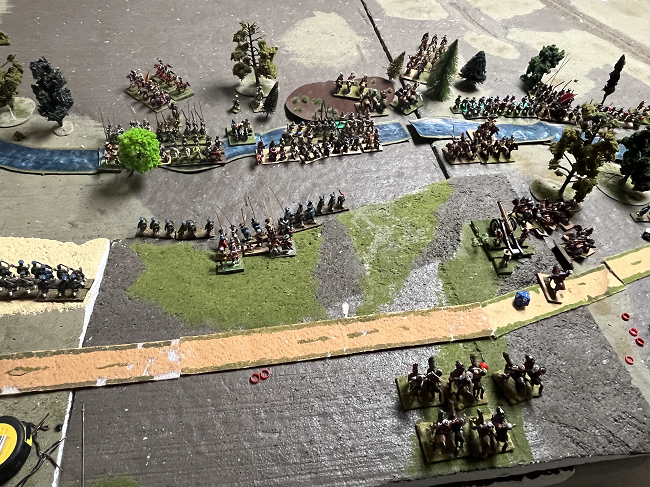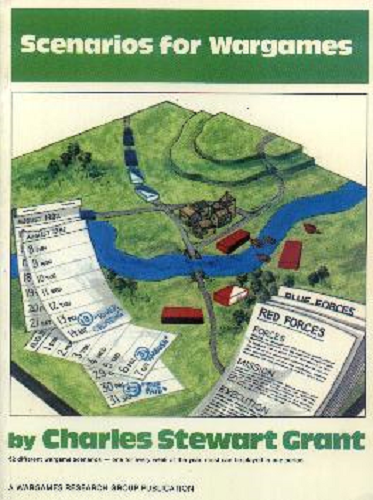Horse and Musket wargaming refers to tabletop games that focus on warfare and conflicts from the late 17th to the early 19th centuries, characterized by the use of both mounted cavalry and musket-armed infantry. This era witnessed significant developments in military tactics, technology, and the evolution of professional armies. Horse and Musket wargaming allows players to explore the strategic challenges and tactical intricacies of this period. Here are some key aspects of Horse and Musket war gaming:
Historical Periods: Horse and Musket wargaming covers a range of historical periods, including the late 17th-century wars, the American War of Independence, the Napoleonic Wars, and the early 19th-century conflicts. Each period offers distinct armies, uniforms, and tactical considerations.
Line Infantry and Artillery: The dominant military formation during this era was the line infantry, armed with muskets or smooth bore muskets. Players command units of infantry, forming lines, and utilizing volley fire tactics. Artillery, including cannons and howitzers, played a significant role in battles and must be effectively employed to support infantry maneuvers.
Cavalry Charges: Horse and Musket wargaming features cavalry units, which were an important component of many armies during this period. Players can command cavalry units, including cuirassiers, dragoons, hussars, and light cavalry. Successful cavalry charges and flanking maneuvers can disrupt enemy lines and provide strategic advantages.
Formation and Discipline: The importance of disciplined formations and unit cohesion is a key aspect of Horse and Musket wargaming. Players must consider the impact of formations such as line, column, square, or skirmish order. Maintaining discipline, executing complex maneuvers, and managing morale are crucial for success.
Command and Control: Horse and Musket wargaming often includes rules for command and control, reflecting the challenges faced by historical commanders. Players must manage the orders given to their units, take into account communication limitations, and deal with the fog of war. Commanders with effective leadership skills can greatly influence the outcome of battles.
Terrain and Battlefield Considerations: Terrain and environmental factors play an important role in Horse and Musket wargaming. Players must consider the impact of terrain features, such as hills, forests, rivers, or buildings, on movement, line of sight, and tactical decisions. The battlefield conditions can significantly affect the outcomes of battles.
Historical Scenarios: Horse and Musket wargaming often provides historical scenarios that allow players to reenact famous battles or campaigns from the era. These scenarios offer a chance to engage in historical reenactments, recreating significant moments like the Battle of Waterloo, the Siege of Yorktown, or the Battle of Austerlitz.
Uniforms and Historical Accuracy: Horse and Musket wargaming enthusiasts often place a strong emphasis on historical accuracy and the visual representation of uniforms, equipment, and weaponry. Historical research, reference materials, and primary sources are often consulted to ensure authenticity in the appearance and characteristics of units.
Horse and Musket wargaming offers a strategic and immersive experience, allowing players to engage with the challenges faced by armies during this era of military evolution. The combination of infantry, cavalry, and artillery tactics, as well as the importance of formation, discipline, and command, provide a unique flavor to the game play. This genre enables enthusiasts to explore historical battles, tactics, and leaders, offering a captivating tabletop experience.
Shop Amazon for: Horse and Musket Wargaming

American War of Independence Wargaming | Napoleonic Wargaming | American Civil War Wargaming
Back to: Historical Wargaming Time Periods



